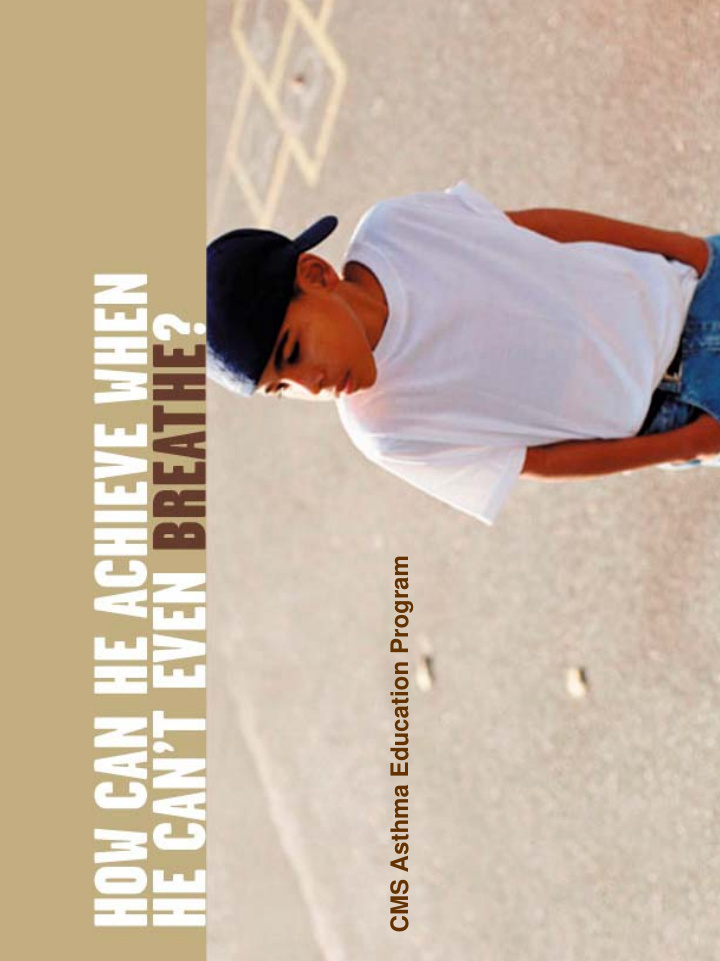



CMS Asthma Education Program
ASTHMA IS …… • Common • Chronic • Treatable • Distressing • Misunderstood • Potentially Dangerous
CMS Prevalence • Number one chronic disease • Leading cause of Absences • 6481 CMS students (2003-04) • 28% Students with symptoms (NCDHHS, 1999) • Higher incidence in minority populations, and urban areas • 74% children treated inadequately (Halterman, 2000) Nightime coughing causes lack of sleep and daytime fatigue • Major cause of poor performance in school
DEFINITION : ASTHMA: A chronic inflammatory disorder of the lungs. � Not contagious � No cure � Variable
TRIGGERS • Allergens : dust mites, mold, pollen, cockroaches, animal dander(cats), feathers • Irritants: Smoke-tobacco,wood; pollutants, odors, perfume • Other: Viral illness, activity, cold air,food, emotions, meds • Occupational: Flour, chemicals latex,grain dust
RESPIRATORY TRACT UPPER AIRWAY Larger Smaller LOWER AIRWAY
PHYSIOLOGY
EXERCISE INDUCED ASTHMA • Can occur during & after exercise • Due to loss of heat, water or both STRATEGIES: • Pre-medicate 15-30 minutes prior to exercise, as ordered • Attention to reduce environmental factors/triggers • Warm-up and cool down activities • Provide Water bottles/hydration
SIGNS & SYMPTOMS EARLY LATE � **COUGH** � Accessory muscles � Wheezing � Blue lips/fingertips � Tightness in Chest � Grey, Pale Skin � Scratchy throat, � Too breathless to runny nose walk/talk (tripod) � Rapid Breathing � Agitation � Mouth Breathing � Loud wheezing or Sudden absence of � Stops activity wheezing
PATTERNS OF DEATH • Gradual worsening of control • Failure to r ecognize or disregard of symptoms • Late arrival of care • Poor use of medication • Sudden onset
ASTHMA ATTACK: What do I do? • Keep CALM • Do not leave child alone • Remove child from known triggers • Encourage child to rest, sit upright • Contact nurse or first responder • Administer medication, if available • Use relaxation techniques -belly breathing, possibly water • Monitor response to meds-observe symptom improvement, do Peak Flow • Contact parent/guardian
CALL ‘911’if …………………. • Lips, skin, nails turn blue/grey • Child becomes agitated, confused, lethargic • Wheezing suddenly stops, child still distressed • Child is unconscious • Symptoms continue and treatment does not work
TYPES Of MEDICATION • Rescue medication (quick relief – starts quickly lasts 4 hrs.) vs. Long Acting (lasts up to 12 hrs) • Bronchodilators (opens airways ) vs. Anti-inflammatories (reduces,prevents swelling)
INHALERS • Most inhalers in schools provide quick relief or rescue medication • If children are using inhalers frequently (every day or several times a day or week), they are not in good control • Check with nurse and/or parent • Always monitor the effectiveness of the medication in relieving symptoms
SPACERS • Easier for young children to use • Coordination/dexterity not an issue • Heavy particles precipitate out • Increases the amount of medication delivered
PEAK FLOW METERS • Monitors changes in lung function • Measures airflow in large airways • Current level vs. personal best (avg.) Staging for medication: GREEN = GO YELLOW = CAUTION RED = STOP
ASTHMA FRIENDLY CLASSROOMS • Know & reduce your student’s triggers • Reduce mold (report water leaks) • Keep classrooms dust/clutter-free • Eliminate furry pets in classroom or keep animal habitat away from vents • Avoid strong odors (perfumes, sprays, cleaning products)
ASTHMA FRIENDLY CLASSROOMS • Indoor air quality: Keep ventilation unblocked and circulating air flow • Outdoor air quality: Be aware of sensitivity to seasonal pollens, grasses, high ozone levels, cold air exposure • Know your building procedure: notify custodian, principal, nurse or CMS environmental safety office
ASTHMA ACTION PLAN • Written Plan, developed and signed by Parent, and Physician • Emergency Contact numbers • Lists child’s Triggers • Child’s individual signs of asthma • Peak Flow reading , if available • Medications, dosage, and when to administer • Steps to take in an Emergency
WHAT YOU CAN DO • Have an emergency action plan and post it • Know early warning signs • Monitor use of rescue medication • Have medication available- field trips, playground, phys. ed. • Attend an asthma education Session
WHAT CAN YOU DO? • Know your students • Communicate with parents, nurse • Create an asthma friendly classroom • Encourage participation in physical activities • Make accommodations, as needed • Support Open Airways (gr. 3-5) or other educational programs for your students
QUESTIONS ??????? Please Fill Out the Evaluation Forms .
Recommend
More recommend